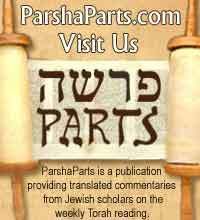The cuneiform inscription in a tablet dating from 595BC has been deciphered for the first time – revealing a reference to an official at the court of Nebuchadnezzar, king of Babylon, that proves the historical existence of a figure mentioned in the Book of Jeremiah.
This is rare evidence in a nonbiblical source of a real person, other than kings, featured in the Bible.
The tablet names a Babylonian officer called Nebo-Sarsekim, who according to Jeremiah xxxix was present in 587BC when Nebuchadnezzar “marched against Jerusalem with his whole army and laid siege to it”.
The discovery was made by Michael Jursa, associate professor at the University of Vienna, on a routine research trip to the museum. “It’s very exciting and very surprising,” he said. “Finding something like this tablet, where we see a person mentioned in the Bible making an everyday payment to the temple in Babylon and quoting the exact date, is quite extraordinary.”
Since 1991, Dr Jursa has been visiting the museum to study a collection of more than 100,000 inscribed tablets – the world’s largest holdings. Although they are examined by international scholars daily, reading and piecing together fragments is painstaking work and more than half are yet to be published.
Cuneiform is the oldest known form of writing. During its 3,000-year history it was used to write about 15 languages including Babylonian, Assyrian, Hittite and Urartian. A wedged instrument – usually a cut reed – was used to press the signs into clay. This gave the writing system its name, “cuneiform”, or wedge-shaped.
There are only a small number of scholars worldwide who can read cuneiform script. One of them is Dr Jursa, who told The Times yesterday that the British Museum tablet was so well preserved that it took him just a couple of minutes to decipher.
This one – which is 2.13 inches (5.5cm) wide – was acquired by the British Museum in 1920. Dr Jursa said: “But no one realised the connection. They didn’t really read it.”
It was unearthed from the ancient city of Sippar, where there was a huge sun temple, just over a mile from modern-day Baghdad. It was part of a large temple archive excavated for the British Museum in the 1870s.
Dr Jursa, who made the discovery while conducting research into officials at the Babylonian court, said that the tablet recorded Nebo-Sarsekim’s gift of gold to the temple – a gift so large that it would be comparable in value today to the cost of a large townhouse.
On hearing of the discovery yesterday, Geza Vermes, the eminent emeritus professor of Jewish studies at the University of Oxford, said that such a discovery revealed that “the Biblical story is not altogether invented”. He added: “This will be interesting for religious people as much as historians.”
References:
Times online: Museum’s tablet lends new weight to Biblical truth
 Always Fresh: Mr Bagel Jlinks
Always Fresh: Mr Bagel Jlinks: Cuneiform * 595BCE * Babylonian Cuneiform tablet * Babylon Cuneiform * Torah * Mr Bagel Jlinks * Jewish * Mr Bagel * BagelBlogger * Bagel Blogger * Jew


 Move your mouse over to display Bagel menu.
Move your mouse over to display Bagel menu.














































 Tanach with Rashi
Tanach with Rashi Megillah & Commentary
Megillah & Commentary Ethics of the Fathers
Ethics of the Fathers Parshah Studies
Parshah Studies Maimonides' Mishneh Torah
Maimonides' Mishneh Torah Chassidic Texts
Chassidic Texts Prayers
Prayers






















